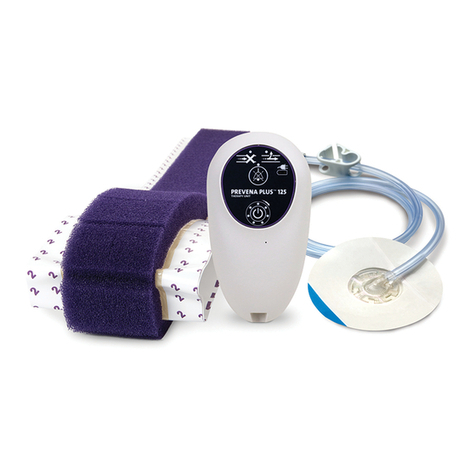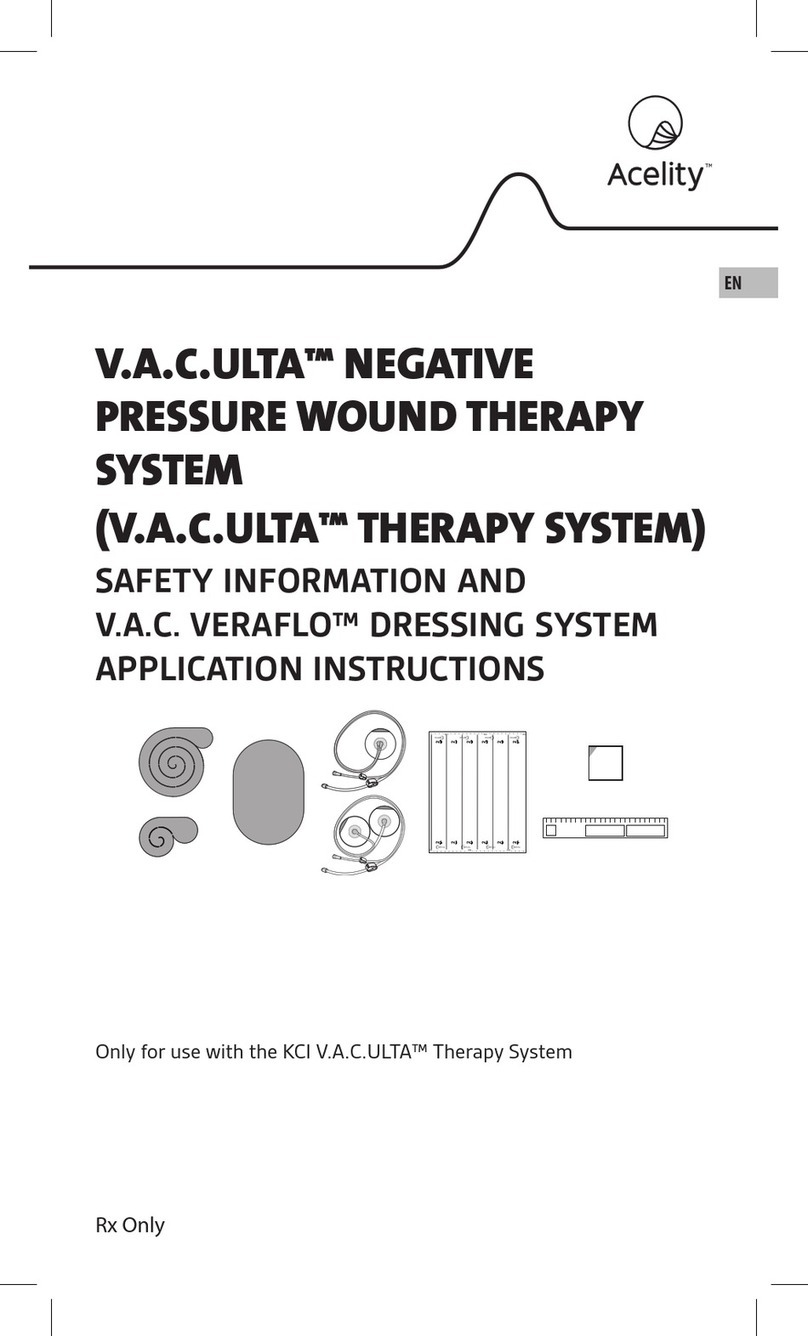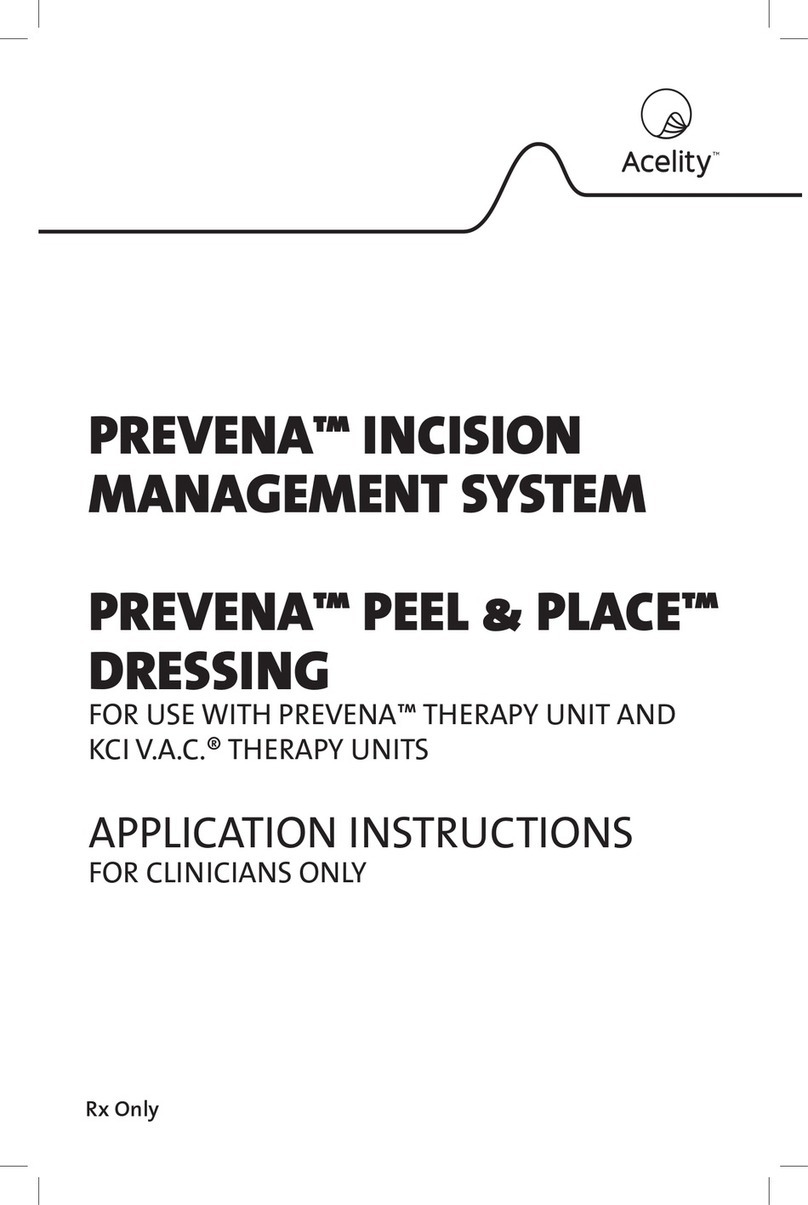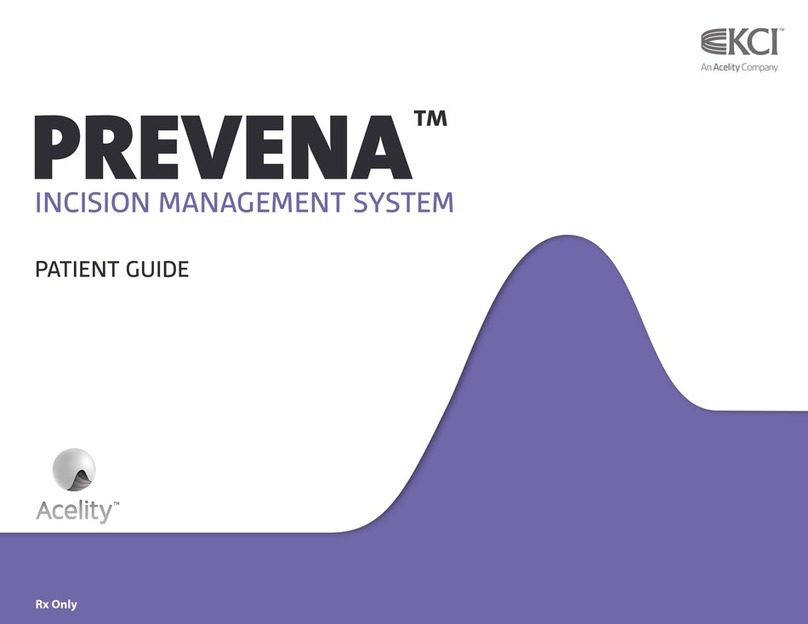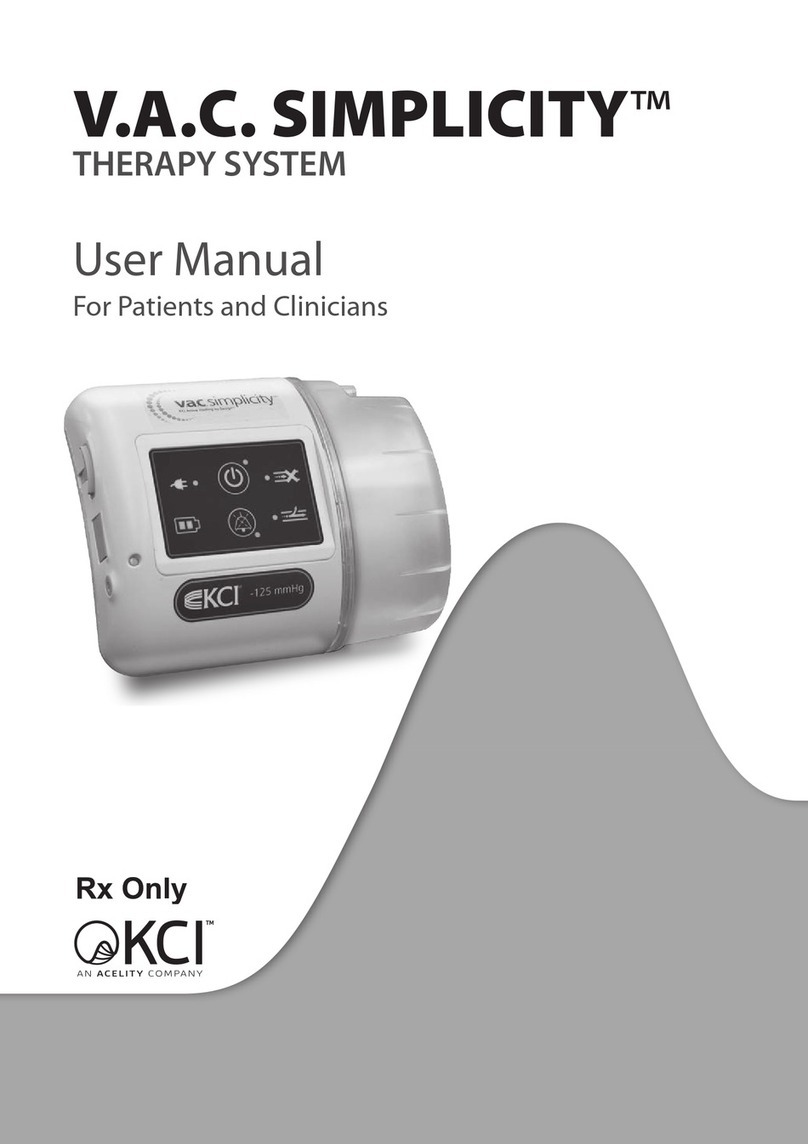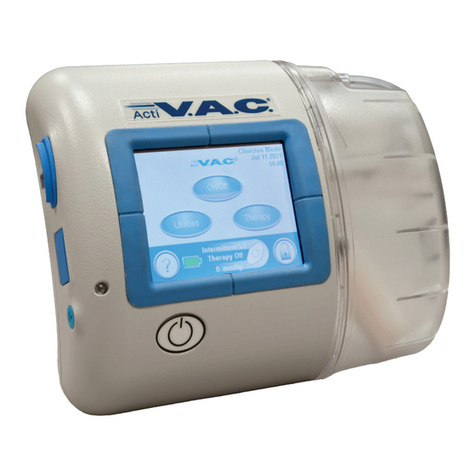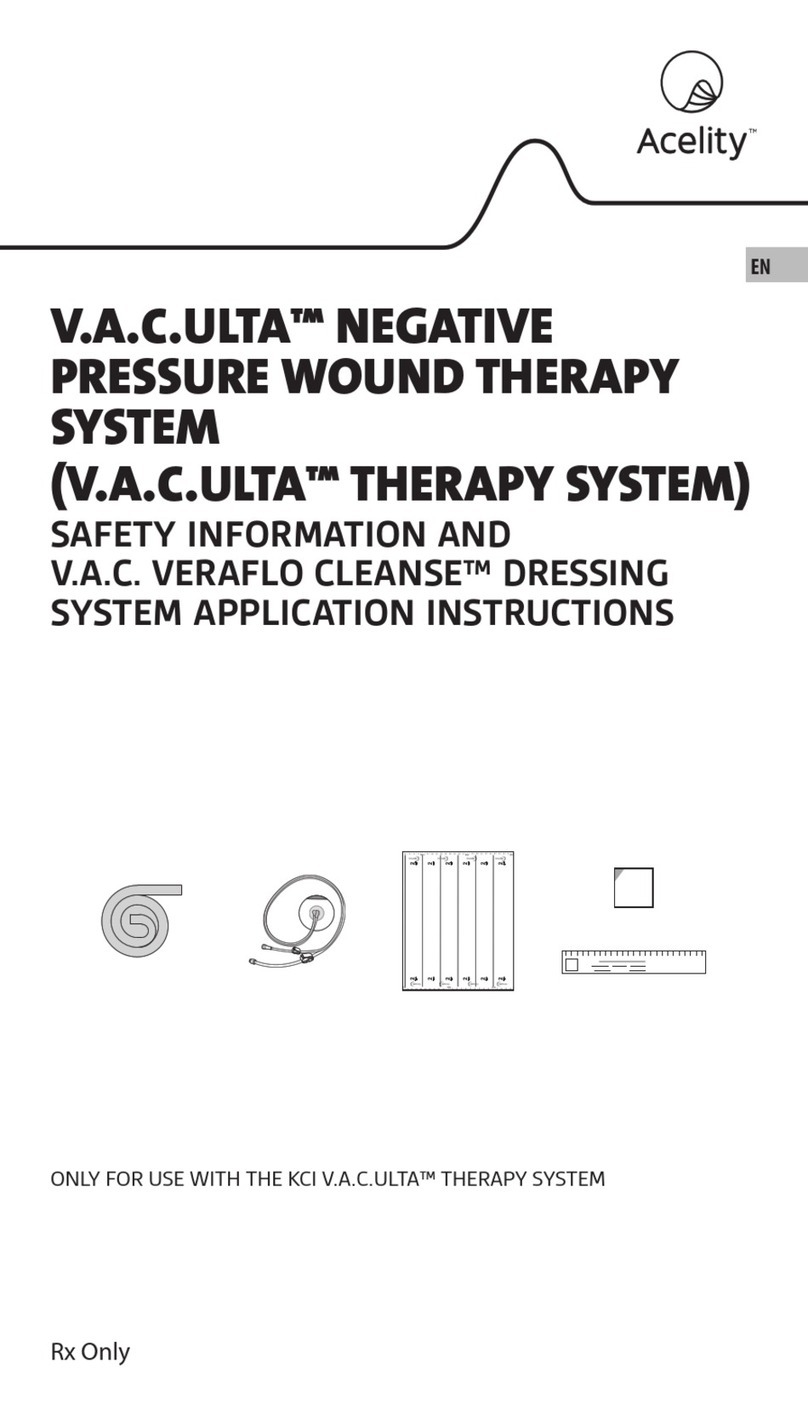
8
Infected Wounds: Infected wounds should be monitored closely and may require more frequent
dressing changes than non-infected wounds, dependent upon factors such as wound conditions,
treatment goals and V.A.C. VeraFlo™ Therapy parameters (for the V.A.C.Ulta™ Therapy System).
Refer to dressing application instructions (found in V.A.C.®Dressing and V.A.C. VeraFlo™ Dressing
cartons) for details regarding dressing change frequency. As with any wound treatment, clinicians
and patients / caregivers should frequently monitor the patient’s wound, periwound tissue
and exudate for signs of infection, worsening infection or other complications. Some signs of
infection are fever, tenderness, redness, swelling, itching, rash, increased warmth in the wound
or periwound area, purulent discharge or strong odor. Infection can be serious, and can lead
to complications such as pain, discomfort, fever, gangrene, toxic shock, septic shock and / or
fatal injury. Some signs or complications of systemic infection are nausea, vomiting, diarrhea,
headache, dizziness, fainting, sore throat with swelling of the mucus membranes, disorientation,
high fever, refractory and / or orthostatic hypotension, or erythroderma (a sunburn-like rash).
If there are any signs of the onset of systemic infection or advancing infection at the
wound site, contact a physician immediately to determine if V.A.C.®Therapy or V.A.C.
VeraFlo™ Therapy should be discontinued. For wound infections relating to blood vessels,
please also refer to the section titled Infected Blood Vessels.
Infected Wounds with V.A.C. GranuFoam Silver™ Dressing: In the event of clinical infection,
V.A.C. GranuFoam Silver™ Dressing is not intended to replace the use of systemic therapy or
other infection treatment regimens. V.A.C. GranuFoam Silver™ Dressing may be used to provide
a barrier to bacterial penetration. Refer to the section titled Additional Precautions for V.A.C.
GranuFoam Silver™ Dressing.
Osteomyelitis: V.A.C.®Therapy and V.A.C. VeraFlo™ Therapy should NOT be initiated on a
wound with untreated osteomyelitis. Consideration should be given to thorough debridement of
all necrotic, non-viable tissue, including infected bone (if necessary), and appropriate antibiotic
therapy.
Protect Tendons, Ligaments and Nerves: Tendons, ligaments and nerves should be protected
to avoid direct contact with V.A.C.®Foam Dressings or V.A.C. VeraFlo™ Therapy Foam Dressings.
These structures may be covered with natural tissue or meshed non-adherent material to help
minimize risk of desiccation or injury.
Foam Placement: Always use V.A.C.®Dressings or V.A.C. VeraFlo™ Therapy Dressings from
sterile packages that have not been opened or damaged. Do not place any foam dressing into
blind / unexplored tunnels. The V.A.C.®WhiteFoam Dressing may be more appropriate for
use with explored tunnels. The V.A.C. VeraFlo Cleanse™ Dressing and V.A.C. VeraFlo Cleanse
Choice™ Dressing Cover Layer without holes may be more appropriate for use with explored
tunnels when using V.A.C. VeraFlo™ Therapy. Do not force foam dressings into any area of the
wound, as this may damage tissue, alter the delivery of negative pressure, or hinder exudate and
foam removal. Always count the total number of pieces of foam used in the wound and the
dressing change date and document that number on the drape, in the patient’s chart and on the
foam quantity label attached to the pad tubing (if provided).
